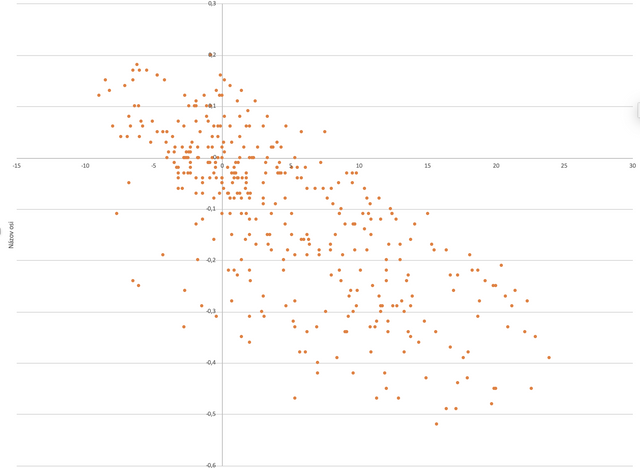In my project I use a 3-wire load cell (like this (3-wire 50kg), but mine were purchased from eBay) and an HX711 for weighing.
My wiring is like this (but I use an Arduino Mini Pro 3.3 V):
Apparently it should be a full-bridge circuit where the temperature is fully compensated and temperature changes are minimal. However, my last-day charts are like this (loaded statically with 18 kg):
The graphs show that the weight varies with temperature. Therefore, I put all temperatures and changes from the calibration value into a graph, where the X-axis is the temperature and the Y-axis is the change from the known value (18 kg).
This chart showed me that the weight is probably not ONLY dependent on temperature as the first charts might seem to indicate.
I'm really frustrated about it, because I've tried everything, but the result is always the same, even though this wiring should compensate for itself.
Has anyone encountered anything like this?







